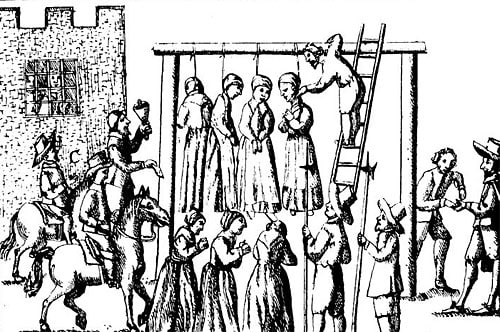In reality people were rarely killed for the more minor offences. The jury would often be lenient; for cases of theft they might undervalue the goods that were stolen in order to bring the severity of the punishment down. No normal people were that keen on sending a man to his death for robbing 25p. Judges would be a little softer too, instead of sending them to the gallows they would force them to join the army, navy or get them transported to Australia.
Although joining the military or getting sent to Australia are defo preferable to the noose, it’s still pretty harsh to get separated from your family and friends for something as pathetic as writing a threatening letter.

However, there were plenty of cases where the full force of the law was brought down hard. In Essex in 1785 ten men accused of crimes such as robbery, breaking and entering and stealing linen from an outhouse were all hung for their crimes. In another case in 1801 a boy of 13 was executed for breaking into a house and stealing a spoon?! So it wasn’t all fun and games.
This madness slowly declined thanks to member of Parliament Samuel Romilly. From 1808 to 1812 he managed to reduce the number of capital offences substantially. Then from 1822 to 1830 Robert Peel (the father of modern policing), as Home Secretary, managed to remove another large chunk. By 1861 only four capital offences remained: murder, treason, arson in the royal dockyard and piracy with violence.
I’m so glad I wasn’t born back then, it sounds like it was rubbish (unless you were loaded, which I’m not).
☛ Next: Graham Frederick Young: The 14 Year Old Serial Killer















